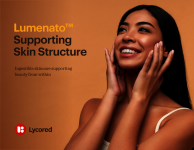‘Localisation failure’: Sephora crumbles under pressure of Korea’s competitive local market
![Sephora’s failure to crack South Korea has been linked to its inability to understand the local market. [Sephora]](/var/wrbm_gb_food_pharma/storage/images/_aliases/wrbm_small/publications/cosmetics/cosmeticsdesign-asia.com/article/2024/04/01/sephora-crumbles-under-pressure-of-korea-s-competitive-local-market/17303303-1-eng-GB/Sephora-crumbles-under-pressure-of-Korea-s-competitive-local-market.jpg)
The beauty retailer, owned by French luxury group LVMH, will withdraw from the Korean market from May 6.
“With heavy hearts, Sephora has decided to terminate its operations in Korea,” it said in an Instagram post on March 19.
The retailer launched in Korea in 2019 with a flagship in the Parnas Mall located in the upscale Gangnam district.
“Sephora follows a long line of foreign-owned businesses that have been unable to succeed in Korea thanks to a combination of protectionist policies, strong local competition and Koreans who prefer to shop with domestic retailers,” said Lauren Lee, founder of STYLESTORY, a K-beauty distributor and consultancy.
She said that Korea remains an extremely difficult market for foreign businesses to succeed in, as evidenced by the closure of many foreign businesses such as Wal-Mart, Tesco, Uber, and Nokia.
“Foreign brands will often face intense competition from a domestic competitor who already has a stronghold on the market, or who can successfully copy the foreign business’ strategy and localise it,” said Lee.
Mike Sohn, CEO of regulatory consultancy REACH24 Korea described the country as “one of the most conservative and closed markets in Asia.”
He said this news came as no surprise to those in the industry.
“It wasn’t a surprise at all because its operating loss with deficit was becoming bigger and bigger every year. It was just a matter of time. I think it was longer than expected. The Myeongdong branch closed in 2022, Yeouido IFC branch closed in 2023, a year after the first one. So everyone saw it coming.”
He highlighted Sephora’s lack of understanding of the Korean market and consumers as one of its biggest downfalls.
“Sephora mostly tried what Sephora US has been implementing, like the beauty advisor program for instance. But in Korea, no one would want to ask a beauty advisor, instead, they want to be alone,” said Sohn.
Lee echoed similar views, noting that the brands brought in by Sephora did not align with the local beauty preferences.
“One issue faced by Sephora was that the Korean beauty approach to cosmetics is fundamentally different to the approach taken by many of the Western brands stocked in Sephora, which cater to the Western preference for stronger, bolder colours. Koreans, on the other hand, have a preference for softer, lighter makeup.”
She added: “Overseas retailers looking to enter the Korean market should be aware of the dangers and difficulties of launching here and determine whether it’s worth the risk. Many businesses prefer to enter into joint ventures with local Korean partners to minimise the risk to their bottom line, although this strategy is not without downsides as well.”
Fierce competition, wrong positioning?
Unfortunately for Sephora, the Korean beauty retail market is well-established with giants such as CJ Group and Shinsegae having cornered the market with Olive Young and CHICOR retail brands respectively.
“Competitors like Olive Young stock many local Korean brands, which are cheaper to manufacture locally and cater specifically to Korean tastes. They are also much quicker at releasing products that respond to local trends,” said Lee.
At the same time, Korean consumers were able to buy foreign brands online at cheaper prices. Sephora also had to compete with other channels such as department stores, said Sohn.
He noted that Sephora could have made a better effort to bring in exclusive brands to drum up excitement.
“There could have been a row of exclusive hot brands only sold from Sephora Korea. It could have had some killer brands of their own. But without a star brand, it was difficult to make consumers to visit and help promote marketing. Sephora itself cannot be the brand in Korea.”
The products that were popular faced stock issues and were sold out for a long period. According to Sohn, this was a common occurrence.
Furthermore, Sephora was poorly positioned in the market as a luxury store, but consumers did not consider it to be a luxury.
“People didn’t want to pay for what they offered, and some of the products were priced too high at the start,” said Sohn.
“Sephora’s perception among Korean consumers falls into colour cosmetics. But Sephora’s colour cosmetics most of the time do not match Korean skin. And CHICOR, a colour cosmetics-centred competitor managed by Shinsegae, a retail giant in Korea, was doing a more localised business compared to them.”
Mismatched leadership?
Sohn highlighted that Sephora Korea had two leaders in four years, signalling “risk” within the company.
Kim Dong-ju, its first general manager, came from luxury beauty brands Chanel and Aesop. In 2021, Kim was replaced by James No.
Sohn pointed out that No did not come from a beauty background with companies such as Disney and Mattel on his resume. Furthermore, his career seems to have been based mostly in China.
“In order to play the role as a newcomer in the market, local networks and CEO’s presence in the market is very important… I think this has been one of the reasons for Sephora’s failures, a lack of Korean spirit in its leaders,” he said.
Moving forward, less competition in a market is never a good thing for a market “because it leaves them with less choice and a reduced bargaining power,” said Lee.
“Sephora was a popular alternative for those looking for a more diverse collection because it stocked a greater shade range of foundations and colour cosmetics than those offered domestically, as well as better access to popular foreign brands,” said Lee.
Sohn concluded: “I think Sephora’s journey to Asia has not been finished. But I think more in-depth study of Korea market and putting a real local strategy and resources would be the key to re-opening of Sephora in Korea in the future.”
Additional reporting by Dang Huiling
![Latest developments from the South Korean beauty market. [Getty Images]](/var/wrbm_gb_food_pharma/storage/images/_aliases/wrbm_medium/publications/cosmetics/cosmeticsdesign-asia.com/article/2024/04/19/korean-wave-able-c-c-kolmar-and-more-in-this-k-beauty-round-up/17357973-1-eng-GB/Korean-wave-Able-C-C-Kolmar-and-more-in-this-K-beauty-round-up.jpg)
![Able C&C has furthered its partnership with Japanese discount chain Daiso with new makeup launch. [A'pieu]](/var/wrbm_gb_food_pharma/storage/images/_aliases/wrbm_medium/publications/cosmetics/cosmeticsdesign-asia.com/headlines/brand-innovation/a-pieu-and-daiso-launch-exclusive-2-makeup-line/17339117-1-eng-GB/A-pieu-and-Daiso-launch-exclusive-2-makeup-line.jpg)
![Native Extracts is seeking opportunities to work with China beauty brands. [Getty Images]](/var/wrbm_gb_food_pharma/storage/images/_aliases/wrbm_medium/publications/cosmetics/cosmeticsdesign-asia.com/article/2024/04/11/native-extracts-aims-to-collaborate-with-c-beauty-brands-with-advanced-chinese-botanicals/17318852-1-eng-GB/Native-Extracts-aims-to-collaborate-with-C-beauty-brands-with-advanced-Chinese-botanicals.jpg)
![A round-up of beauty business updates in the APAC cosmetics industry. [Chantecaille]](/var/wrbm_gb_food_pharma/storage/images/_aliases/wrbm_medium/publications/cosmetics/cosmeticsdesign-asia.com/headlines/business-financial/chantecaille-nykaa-sephora-and-more-in-our-beauty-business-update/17319755-1-eng-GB/Chantecaille-Nykaa-Sephora-and-more-in-our-beauty-business-update.jpg)





![Curie Co has launched a naturally derived bond builder which it believes has the potential to be an effective anti-humidity hair care solution for South East Asia. [Getty Images]](/var/wrbm_gb_food_pharma/storage/images/_aliases/wrbm_tiny/publications/cosmetics/cosmeticsdesign-asia.com/headlines/formulation-science/curie-co-believes-its-bond-builder-can-bring-effective-anti-humidity-hair-solutions-to-sea/17375805-1-eng-GB/Curie-Co-believes-its-bond-builder-can-bring-effective-anti-humidity-hair-solutions-to-SEA.jpg)
![The Whoo has helped to bolster sales for LG H&H and restore the firm’s growth trajectory. [The Whoo]](/var/wrbm_gb_food_pharma/storage/images/_aliases/wrbm_tiny/publications/cosmetics/cosmeticsdesign-asia.com/headlines/business-financial/lg-h-h-beauty-returns-to-growth-on-the-back-of-the-whoo-renewal/17378661-1-eng-GB/LG-H-H-beauty-returns-to-growth-on-the-back-of-The-Whoo-renewal.jpg)
![Skinidea has developed a new skin care brand, MDP, specifically to target US beauty consumers. [Medipeel]](/var/wrbm_gb_food_pharma/storage/images/_aliases/wrbm_tiny/publications/cosmetics/cosmeticsdesign-asia.com/headlines/business-financial/skinidea-develops-new-brand-to-target-us-market-as-part-of-expansion-plans/17362677-1-eng-GB/Skinidea-develops-new-brand-to-target-US-market-as-part-of-expansion-plans.jpg)
![Organic Bioactives has debuted hair care solutions for the first time. [Getty Images]](/var/wrbm_gb_food_pharma/storage/images/_aliases/wrbm_tiny/publications/cosmetics/cosmeticsdesign-asia.com/headlines/formulation-science/organic-bioactives-launches-native-nz-botanicals-hair-care-actives/17376246-1-eng-GB/Organic-Bioactives-launches-native-NZ-botanicals-hair-care-actives.jpg)


![Toyo Sugar enzymatically modified resveratrol to make it water-soluble and more bioavailable. [Getty Images]](/var/wrbm_gb_food_pharma/storage/images/_aliases/wrbm_tiny/publications/cosmetics/cosmeticsdesign-asia.com/headlines/formulation-science/toyo-sugar-produces-water-soluble-resveratrol-for-cosmetics/17378607-1-eng-GB/Toyo-Sugar-produces-water-soluble-resveratrol-for-cosmetics.jpg)



